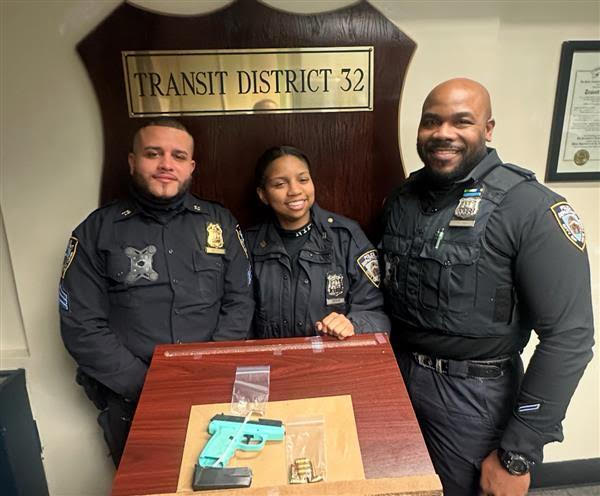
Rockaway sees great promise in dockless bicycle sharing — even with a hiccup or two during the service’s launch over the weekend.
Both Pace and Lime sprinkled the Queens peninsula with roughly 150 bikes beginning Friday, allowing users there to pay to ride and lock up bikes anywhere through the respective apps.
Several photos circulated on social media of bikes thrown haphazardly onto the sand. In one instance, a LimeBike was pictured hanging from its front fork on a chain link fence.
But most Rockaway residents and visitors shrugged off those examples of abuse given the potential benefits in getting around the neighborhood.
“I think it’ll be a home run,” said Pat Delaney, 57, a Rockaway resident who had just learned about the bike share Sunday as he enjoyed a drink on the Rockaway Beach boardwalk. “It’s huge for all the people trying to bounce around Rockaway, and it certainly beats driving around here.”
Lime and Pace are two of five companies the city has selected to pilot dockless bicycle sharing in areas of the boroughs, including Staten Island and the Bronx, currently not reached by Citi Bike. Dockless bikes will launch in specific zones within those boroughs in the coming weeks, with dockless service coming to Coney Island later in the year.
The service is similar to the established bike share but without the docking stations. It has been spreading through cities across the world in recent years as a cheaper model with lower overhead.
“I saw them and first thought, ‘Yes! Bikes!’ and then I turned the corner on the boardwalk and saw another bike laying in the sand,” said Maude Moses, 40, a Rockaway resident and artist who was walking the Rockaway Beach boardwalk. “That’s not cool. But I’m still 100 percent thrilled. We should have had this long ago.”
As he passed by a row of angled, green-and-yellow LimeBikes on the boardwalk, Richard Manna stopped, took off his glasses and began reading the directions for riding. The bike has a circular lock that runs through its back wheel, which can be unlocked by scanning a QR code. Pace and Lime charge $1 for every 30 minutes on their pedal bikes. Manna, 66, who was out for a jog, carried on, giving the service his approval.
“It’s definitely worth giving this a shot. Like with anything, there is a small number of vandals who will misuse the service, but for the most part people are conscientious and will be responsible,” Manna said. “It could work. This is, like, bike country; everyone has a bike to get around here.”
Brian Wolohan, 41, of Astoria, thought dockless was a “brilliant idea.” He and a companion were riding Pace bikes down the boardwalk Sunday during a weekend trip to the beach.
“It was pretty simple and easy to set up — and the prices are much cheaper than other rental companies,” Wolohan said as he was interviewed from his saddle.
In the rapidly evolving world of bike sharing, experts are unsure how much of a role dockless bicycle and/or scooter-sharing services can play in getting people around cities, or whether the business model is sustainable.
The National Association of City Transportation Officials (NACTO) documented five major dockless companies operating in roughly 25 cities and suburbs by the end of the 2017.
At that point, 44 percent of all bicycles in bike share programs were dockless — but dockless systems only accounted for 4 percent of all rides, according to NACTO data.
“Dockless is still very, very new and it’s still too early to tell,” said Nicole Payne, manager for the Cities for Cycling program at NACTO. “The first city to really create a pilot was Seattle, and now it’s in the process of updating its requirements. So, cities are still learning and finding what works and what’s equitable for everyone in the city.”
Mayor Bill de Blasio announced the launch of dockless service in the Rockaways on Friday, where he noted the achievements of Citi Bike, one of the most successful bike share systems in the world in terms of ridership.
Citi Bike’s parent company, Motivate, said it could only expand to all five boroughs with taxpayer money or renegotiated operating agreements.
Polly Trottenberg, the city’s DOT commissioner, on Friday reasoned that the city moved toward dockless because it was easy to launch and that a city as large as New York could potentially support multiple different bike share services from different companies — though only the outcome of the pilot would tell.
The DOT did not share ridership data from the first weekend with Pace and Lime in Rockaway.
“It feels like another example of government chasing new technology instead of just funding infrastructure that works,” said Amanda Resalado, 22, who was waiting for a subway out of Rockaway on Sunday. Resalado is contemplating a move to the area and would have much preferred a Citi Bike expansion there because of its proven track record. Even if dockless sticks, she said she’d likely just buy her own bike.
As for the Lime that was thrown onto the sand, the companies said they’d have workers repairing bikes and moving those that are left in untoward places, like the beach or private property. But on Sunday, it was the work of the NYPD.
“I guess this is me,” sighed a police officer who passed the bike as he patrolled the boardwalk. He hopped the fence and lifted the bike back to the boardwalk. “It’s ridiculous. It’s been, what, a day?”



































